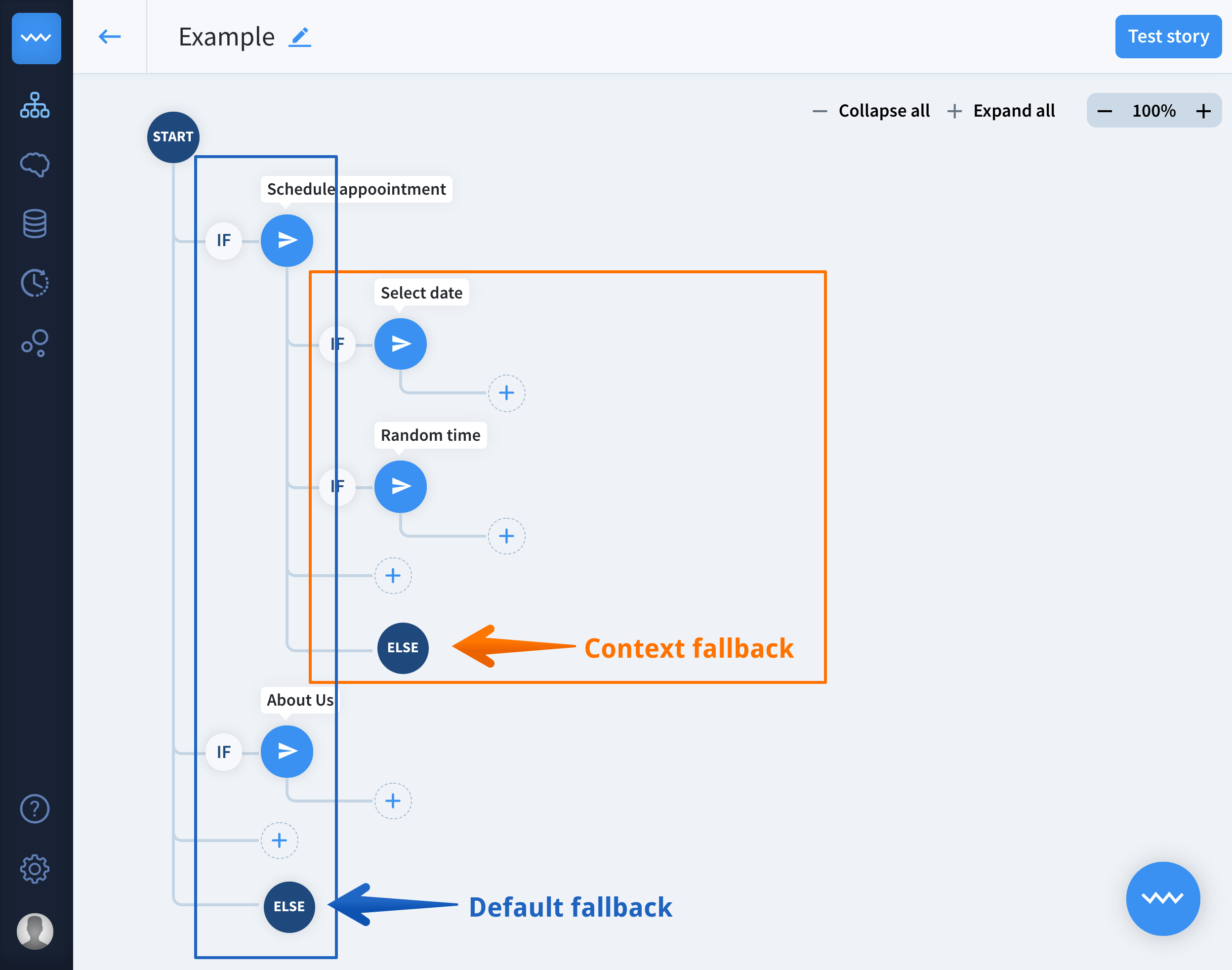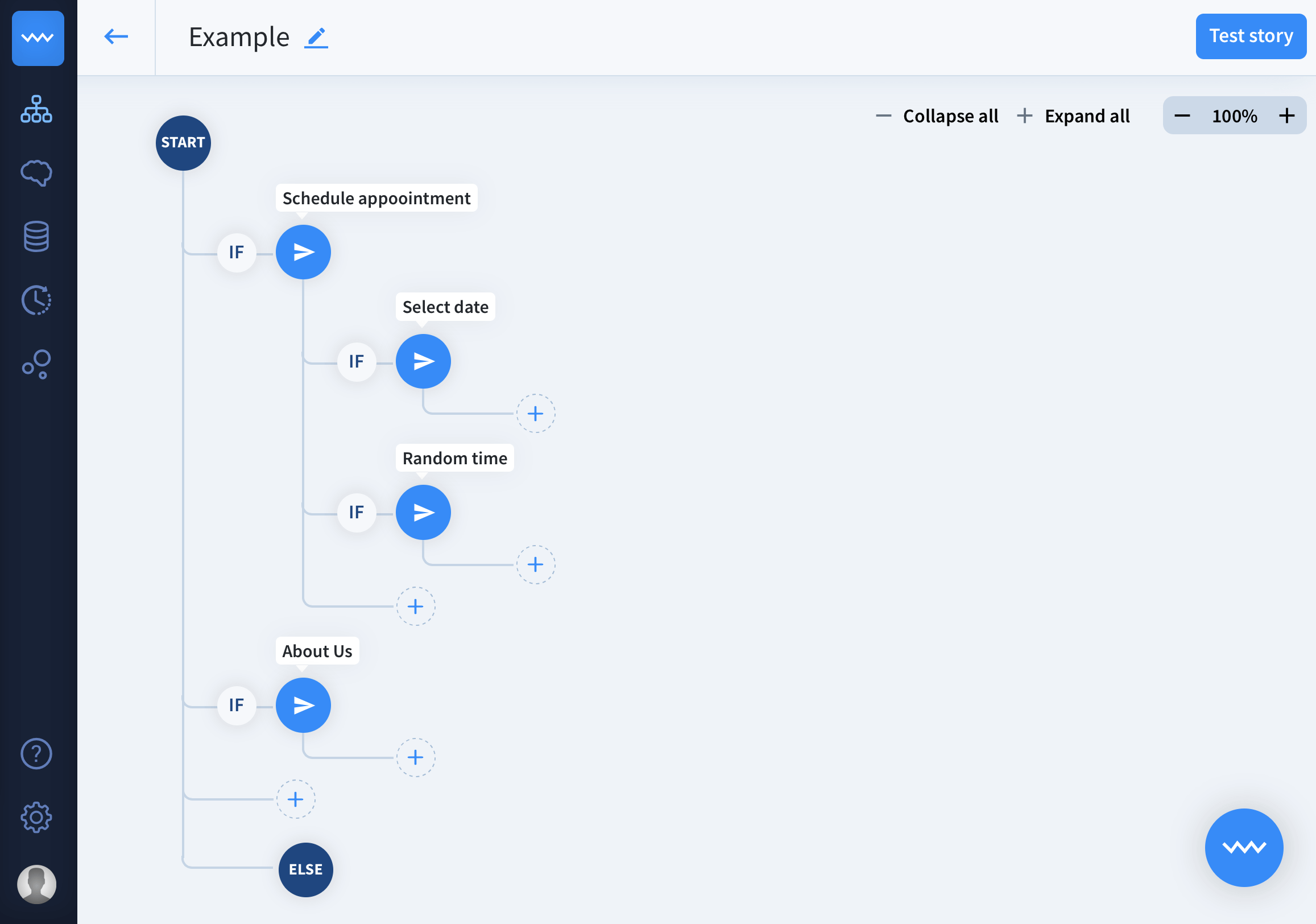Context fallback allows crafting individual fallback messages for each step of the chatbot’s scenario.
Even the best-planned chatbot scenario won’t cover all possible cases. Users may ask questions irrelevant to your business, use different wording or type a letter instead of a short query. The fallback interaction successfully manages all of the cases when the queries cannot be matched with the user says we’ve predicted. But setting up the fallback to serve all possible cases is difficult but sometimes even impossible.
When you want to show a more precise prompt to your bot’s interlocutors, use the context fallback. This interaction can handle the fallback message at a specific level of the conversation and show to the user the right catchword at the right time, so the conversation isn’t disrupted.
How does it work
To add the context fallback, go to the story view and click the plus button. The blue circle will be automatically created for you. Click on it to add bot actions and responses.

-
The context fallback’s scope is limited to one level of the conversation.
-
Each level of the story can contain max one context fallback.
-
This fallback can be edited like any other interaction. Feel free to add various actions, responses, and filters to it to support all cases.
-
The context fallback isn’t available in the story’s root.
The context fallback step by step tutorial
-
Create a new story and add a few interactions. Note, that the
startandelsedefault interactions have been automatically added to your story. The first one triggers automatically when a user opens the chat window, the second one is the general default fallback.
-
To add a new oontext fallback, click the plus button. Remember that option isn’t available in the story’s root.
-
Open the context fallback and add bot actions and responses to it.
-
Save your work. The context fallback is ready!